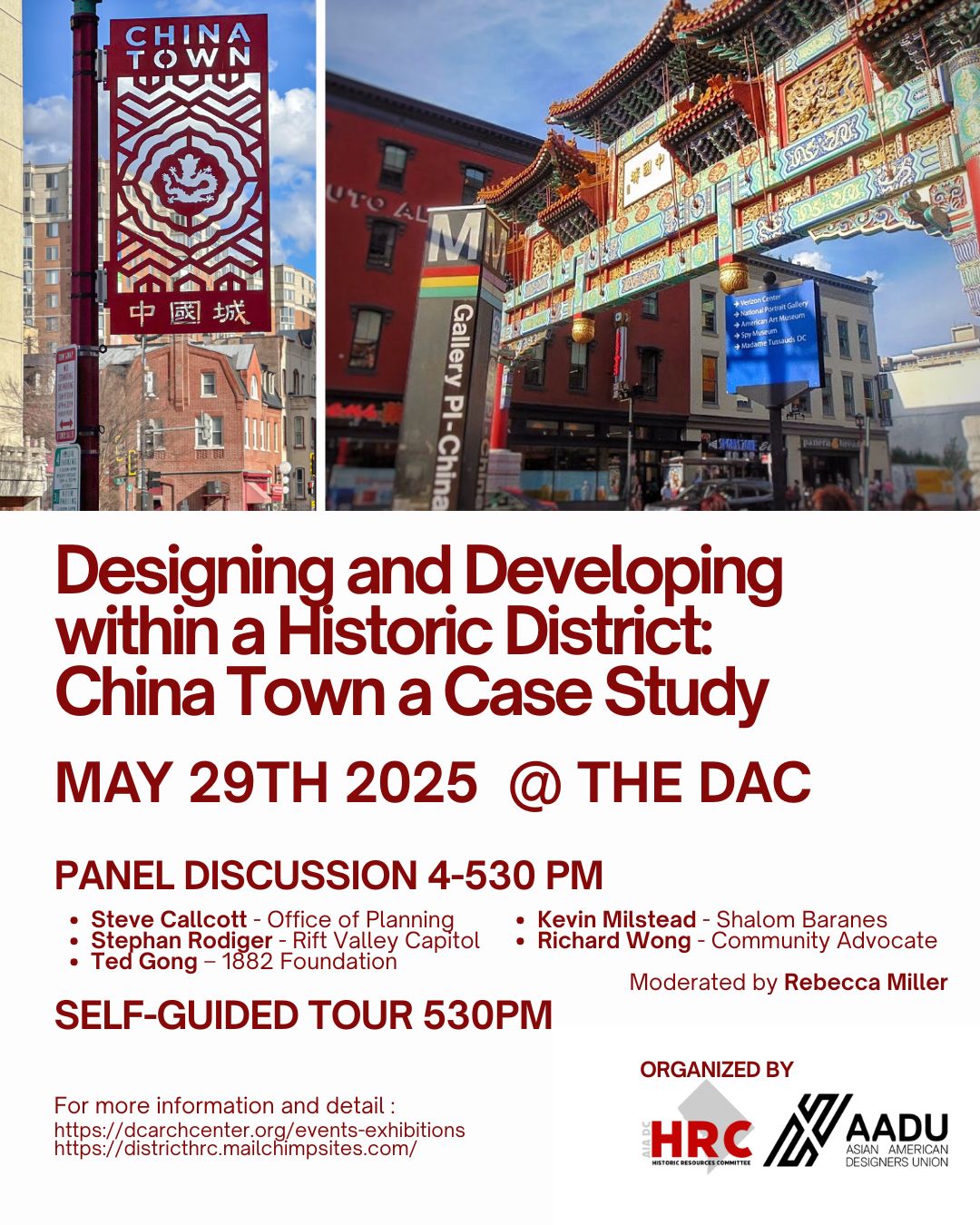-
Date
Thursday, May 29 2025
-
Time
4:00pm - 5:30pm
-
Location
Join the AIA|DC Historic Resources Committee and the Asian American Designers Union (AADU) this May for a special Preservation Month panel discussion focused on the past, present, and future of Washington, DC’s Chinatown.
As one of the city’s most culturally rich and historically significant neighborhoods, Chinatown has long balanced the preservation of its architectural and cultural identity with the pressures of redevelopment and adaptive reuse. With recent conversations around the potential reimagining of the Capital One Arena, the area is once again at a pivotal crossroads.
This timely panel will feature voices from the Asian American community, alongside representatives from the DC Office of Planning, a local developer, and a design professional who has worked on key projects in the area. Together, they will share their experiences shaping the Chinatown we know today, discussing successes and challenges in maintaining the character of this core historic district amid new development.
We will also take a closer look at the neighborhood’s layered history - its origins, cultural evolution, and the importance of representation in preservation. Panelists will explore how public policy, community advocacy, and thoughtful design can support Chinatown’s cultural identity while ensuring a vibrant future.
Presented by:
- Office of Planning – Steve Callcott
- Developer – Stephan Rodiger - Rift Valley Capitol
- Architect – Kevin Milstead - Shalom Baranes
- Chinatown History – Richard Wong
- Chinatown Community - Ted Gong – 1882 Foundation
- Moderator – Rebecca Miller
Agenda:
- 5 Introduction (Rebecca Miller)
- 5 Chinatown History (Richard Wong)
- 20 (4) Participants Briefing
- 45 Panel Discussion
- 15 Question & Answer
Self-Guided Tour: Follow on tour at 5:30. Modified digital tour offered with support from DC Preservation League
To complement the panel, attendees are invited to take a self-guided walking tour of Chinatown. A curated map and guide will highlight notable historic sites, examples of adaptive reuse, and current or upcoming development projects. This tour offers a chance to see firsthand how the District’s built environment reflects its ongoing story of transformation.
Learning Objectives:
- Learn about the cultural and architectural history of DC's Chinatown.
- Identify principles of adaptive reuse and how they are applied to preserve cultural heritage in urban historic districts.
- Evaluate the role of zoning, regulations, and guidelines in shaping historic neighborhoods.
- Examine how architectural interventions in historic neighborhoods like Chinatown impact community and cultural continuity.
- Analyze examples of adaptive reuse within historically significant neighborhoods that accommodated growth and development while aligning with preservation best practice.
Sponsored by:

